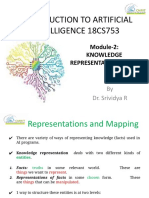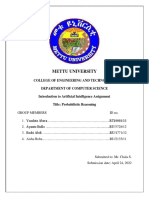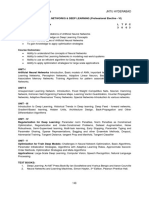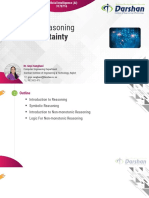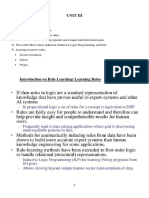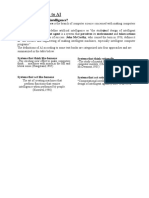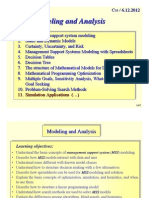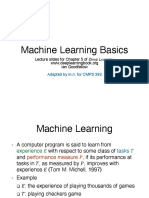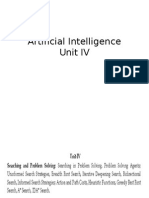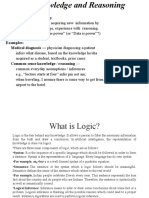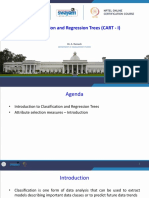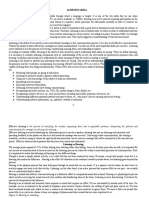0% found this document useful (0 votes)
495 views34 pagesKnowledge Representation Issues
This document discusses knowledge representation and different approaches to representing knowledge. It introduces simple relational knowledge representation using relations and attributes to represent facts. It also discusses inheritable knowledge representation which augments basic representation with inference mechanisms by organizing objects into classes and arranging classes in a generalization hierarchy to support property inheritance. The document provides an example of representing additional baseball knowledge in a semantic network structure with slots, fillers, objects and values to illustrate inheritable knowledge representation.
Uploaded by
Fariha OisyCopyright
© © All Rights Reserved
We take content rights seriously. If you suspect this is your content, claim it here.
Available Formats
Download as PDF, TXT or read online on Scribd
0% found this document useful (0 votes)
495 views34 pagesKnowledge Representation Issues
This document discusses knowledge representation and different approaches to representing knowledge. It introduces simple relational knowledge representation using relations and attributes to represent facts. It also discusses inheritable knowledge representation which augments basic representation with inference mechanisms by organizing objects into classes and arranging classes in a generalization hierarchy to support property inheritance. The document provides an example of representing additional baseball knowledge in a semantic network structure with slots, fillers, objects and values to illustrate inheritable knowledge representation.
Uploaded by
Fariha OisyCopyright
© © All Rights Reserved
We take content rights seriously. If you suspect this is your content, claim it here.
Available Formats
Download as PDF, TXT or read online on Scribd
/ 34
